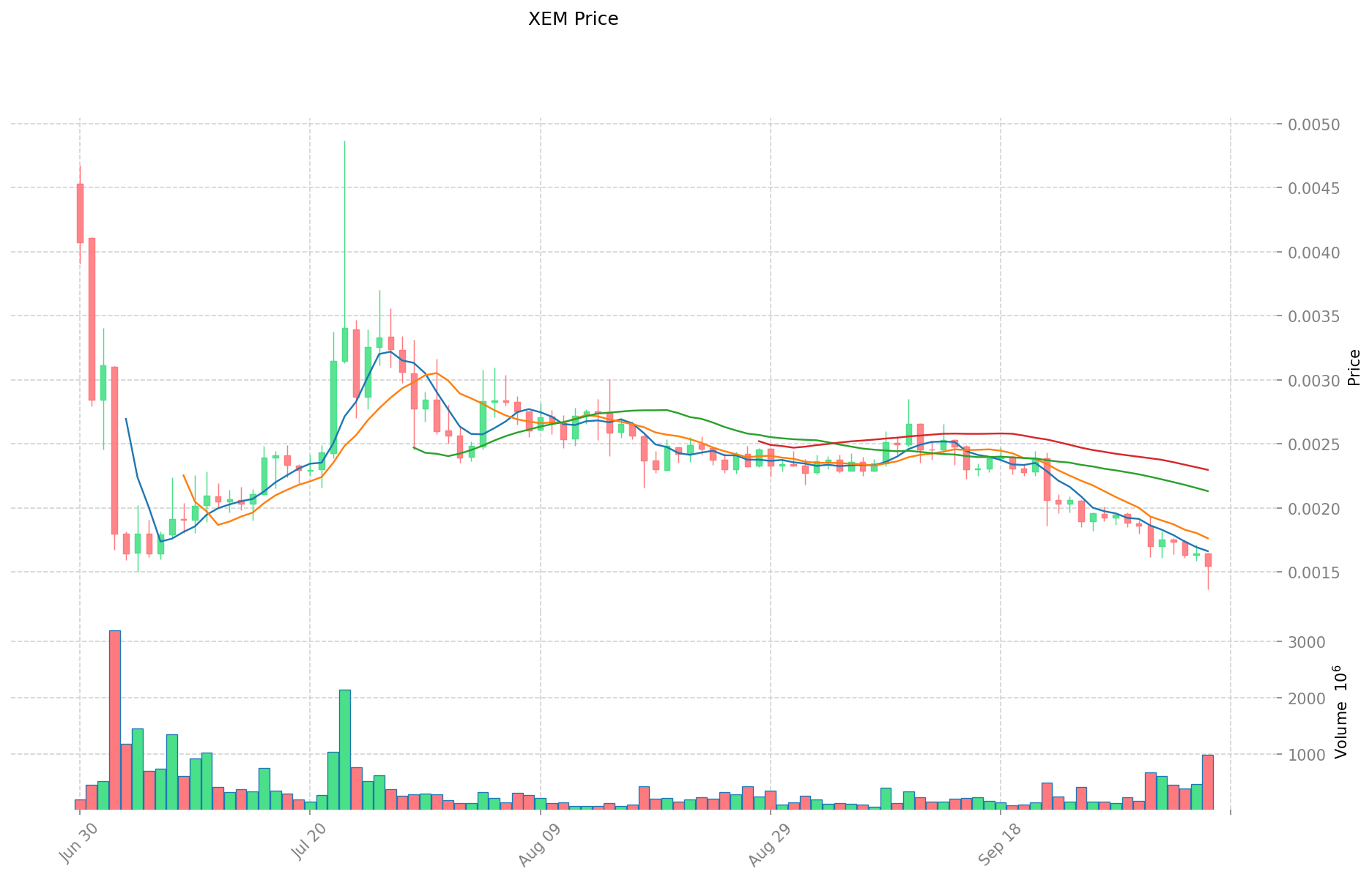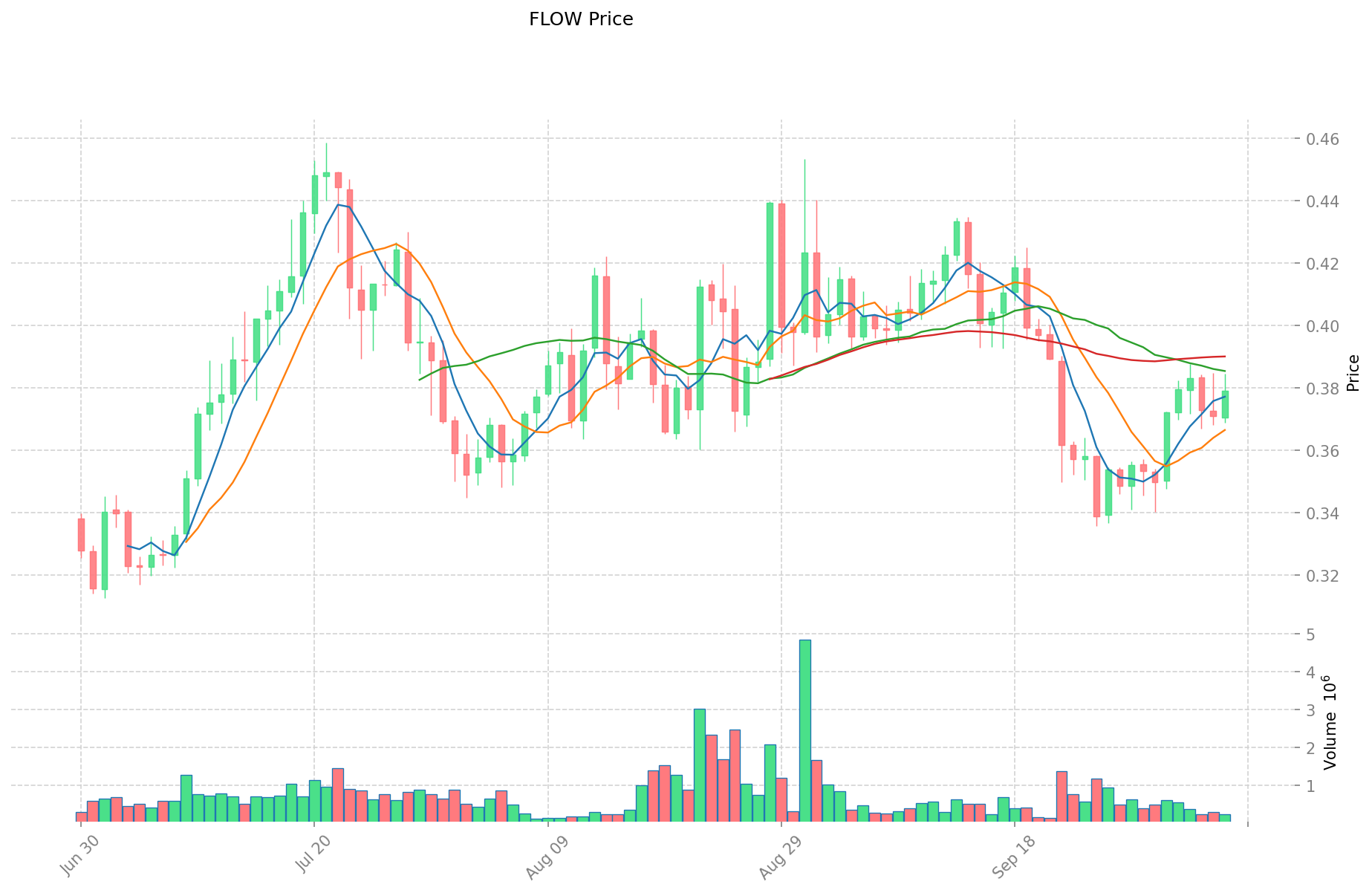XEM vs FLOW: Comparing Two Distinctive Approaches to Blockchain Technology and Digital Asset Management
Introduction: XEM vs FLOW Investment Comparison
In the cryptocurrency market, the comparison between XEM vs FLOW has always been an unavoidable topic for investors. The two not only differ significantly in market cap ranking, application scenarios, and price performance, but also represent different cryptocurrency positioning.
XEM (XEM): Since its launch in 2015, it has gained market recognition for its digital asset management capabilities.
FLOW (FLOW): Introduced in 2020, it has been hailed as a platform for next-generation games and applications, becoming one of the cryptocurrencies with significant development potential.
This article will comprehensively analyze the investment value comparison between XEM vs FLOW, focusing on historical price trends, supply mechanisms, institutional adoption, technological ecosystems, and future predictions, attempting to answer the question investors care about most:
"Which is the better buy right now?"
I. Price History Comparison and Current Market Status
NEM (XEM) and Flow (FLOW) Historical Price Trends
- 2018: XEM reached its all-time high of $1.87 on January 7, 2018.
- 2021: FLOW reached its all-time high of $42.40 on April 5, 2021.
- Comparative analysis: Since their respective peaks, XEM has declined by over 99% to its current price, while FLOW has fallen by over 99% as well.
Current Market Situation (2025-10-07)
- XEM current price: $0.001541
- FLOW current price: $0.3793
- 24-hour trading volume: XEM $1,490,690 vs FLOW $90,665
- Market Sentiment Index (Fear & Greed Index): 71 (Greed)
Click to view real-time prices:
- View XEM current price Market Price
- View FLOW current price Market Price


II. Key Factors Affecting Investment Value of XEM vs FLOW
Market Sentiment and Investor Confidence
- FLOW: Investor sentiment and confidence have a direct impact on FLOW's price trends
- Market Psychology: Price volatility is primarily driven by changes in investor confidence
- 📌 Historical Pattern: Market sentiment often creates cyclical price movements in both assets
Regulatory Environment and Policy
- Government Policies: Cryptocurrency regulations directly affect market acceptance of FLOW
- Compliance Requirements: Regulatory changes can significantly impact valuation and adoption
- Global Variations: Different regulatory approaches across countries affect trading volumes
Technology Innovation and Development
- FLOW: Value is influenced by technological advancements and platform innovations
- Ecosystem Growth: Development of NFTs, blockchain games, and DApps affects long-term value
- Technical Infrastructure: Blockchain performance metrics impact user adoption and growth
Macroeconomic Factors
- Economic Trends: Broader economic conditions affect investment flows into crypto assets
- Currency Correlations: Relationships with fiat currencies impact trading dynamics
- Cross-border Applications: Value for international trade and remittances affects utility
III. 2025-2030 Price Prediction: XEM vs FLOW
Short-term Forecast (2025)
- XEM: Conservative $0.00144948 - $0.001542 | Optimistic $0.001542 - $0.00180414
- FLOW: Conservative $0.2841 - $0.3788 | Optimistic $0.3788 - $0.53032
Mid-term Forecast (2027)
- XEM may enter a growth phase, with prices expected between $0.001131831855 - $0.00233225958
- FLOW may enter a bullish market, with prices expected between $0.359125128 - $0.660998424
- Key drivers: Institutional inflows, ETFs, ecosystem development
Long-term Forecast (2030)
- XEM: Base scenario $0.002398091893887 - $0.003333347732503 | Optimistic scenario $0.003333347732503+
- FLOW: Base scenario $0.817429296105 - $1.144401014547 | Optimistic scenario $1.144401014547+
Disclaimer: This forecast is for informational purposes only and should not be considered as financial advice. Cryptocurrency markets are highly volatile and unpredictable. Always conduct your own research before making any investment decisions.
XEM:
| 年份 | 预测最高价 | 预测平均价格 | 预测最低价 | 涨跌幅 |
|---|---|---|---|---|
| 2025 | 0.00180414 | 0.001542 | 0.00144948 | 0 |
| 2026 | 0.0017567235 | 0.00167307 | 0.0011042262 | 8 |
| 2027 | 0.00233225958 | 0.00171489675 | 0.001131831855 | 11 |
| 2028 | 0.00261041583285 | 0.002023578165 | 0.0013760331522 | 31 |
| 2029 | 0.002479186788849 | 0.002316996998925 | 0.001506048049301 | 50 |
| 2030 | 0.003333347732503 | 0.002398091893887 | 0.001798568920415 | 55 |
FLOW:
| 年份 | 预测最高价 | 预测平均价格 | 预测最低价 | 涨跌幅 |
|---|---|---|---|---|
| 2025 | 0.53032 | 0.3788 | 0.2841 | 0 |
| 2026 | 0.5863824 | 0.45456 | 0.2318256 | 19 |
| 2027 | 0.660998424 | 0.5204712 | 0.359125128 | 37 |
| 2028 | 0.86247282552 | 0.590734812 | 0.40760702028 | 55 |
| 2029 | 0.90825477345 | 0.72660381876 | 0.4795585203816 | 91 |
| 2030 | 1.144401014547 | 0.817429296105 | 0.6375948509619 | 115 |
IV. Investment Strategy Comparison: XEM vs FLOW
Long-term vs Short-term Investment Strategies
- XEM: Suitable for investors focused on digital asset management capabilities
- FLOW: Suitable for investors interested in next-generation games and applications
Risk Management and Asset Allocation
- Conservative investors: XEM: 30% vs FLOW: 70%
- Aggressive investors: XEM: 60% vs FLOW: 40%
- Hedging tools: Stablecoin allocation, options, cross-currency portfolios
V. Potential Risk Comparison
Market Risk
- XEM: High volatility, susceptible to market sentiment
- FLOW: Dependent on adoption of blockchain gaming and NFT markets
Technical Risk
- XEM: Scalability, network stability
- FLOW: Smart contract vulnerabilities, potential blockchain congestion
Regulatory Risk
- Global regulatory policies may impact both assets differently, with FLOW potentially facing more scrutiny due to its focus on NFTs and gaming
VI. Conclusion: Which Is the Better Buy?
📌 Investment Value Summary:
- XEM advantages: Established history, digital asset management focus
- FLOW advantages: Strong potential in gaming and NFT markets, ecosystem growth
✅ Investment Advice:
- Novice investors: Consider a smaller allocation to FLOW as part of a diversified portfolio
- Experienced investors: Balance between XEM and FLOW based on risk tolerance and market outlook
- Institutional investors: Evaluate FLOW's potential in the growing blockchain gaming sector
⚠️ Risk Warning: The cryptocurrency market is highly volatile. This article does not constitute investment advice. None
VII. FAQ
Q1: What are the main differences between XEM and FLOW? A: XEM focuses on digital asset management and has been around since 2015, while FLOW is a newer platform (launched in 2020) designed for next-generation games and applications, particularly in the NFT and blockchain gaming sectors.
Q2: Which cryptocurrency has performed better historically? A: Both XEM and FLOW have experienced significant price declines from their all-time highs. XEM reached its peak of $1.87 in January 2018, while FLOW hit $42.40 in April 2021. Both have since declined by over 99% from these peaks.
Q3: What are the current prices and market conditions for XEM and FLOW? A: As of 2025-10-07, XEM is priced at $0.001541, while FLOW is at $0.3793. The 24-hour trading volume for XEM is $1,490,690, compared to FLOW's $90,665. The current market sentiment index is 71, indicating "Greed."
Q4: What factors influence the investment value of XEM and FLOW? A: Key factors include market sentiment, regulatory environment, technological innovation, and macroeconomic conditions. FLOW's value is particularly influenced by developments in NFTs, blockchain games, and DApps.
Q5: What are the price predictions for XEM and FLOW in the coming years? A: By 2030, XEM is projected to reach between $0.002398091893887 and $0.003333347732503 in the base scenario, while FLOW is expected to be between $0.817429296105 and $1.144401014547. However, these predictions are subject to market volatility and should not be considered financial advice.
Q6: How should investors approach XEM and FLOW in their portfolio? A: Conservative investors might consider allocating 30% to XEM and 70% to FLOW, while aggressive investors might opt for 60% XEM and 40% FLOW. It's important to diversify and consider individual risk tolerance and market outlook.
Q7: What are the potential risks associated with investing in XEM and FLOW? A: Both cryptocurrencies face market risks such as high volatility. XEM has technical risks related to scalability and network stability, while FLOW may face smart contract vulnerabilities and blockchain congestion. Regulatory risks are also a concern, particularly for FLOW due to its focus on NFTs and gaming.
Share
Content